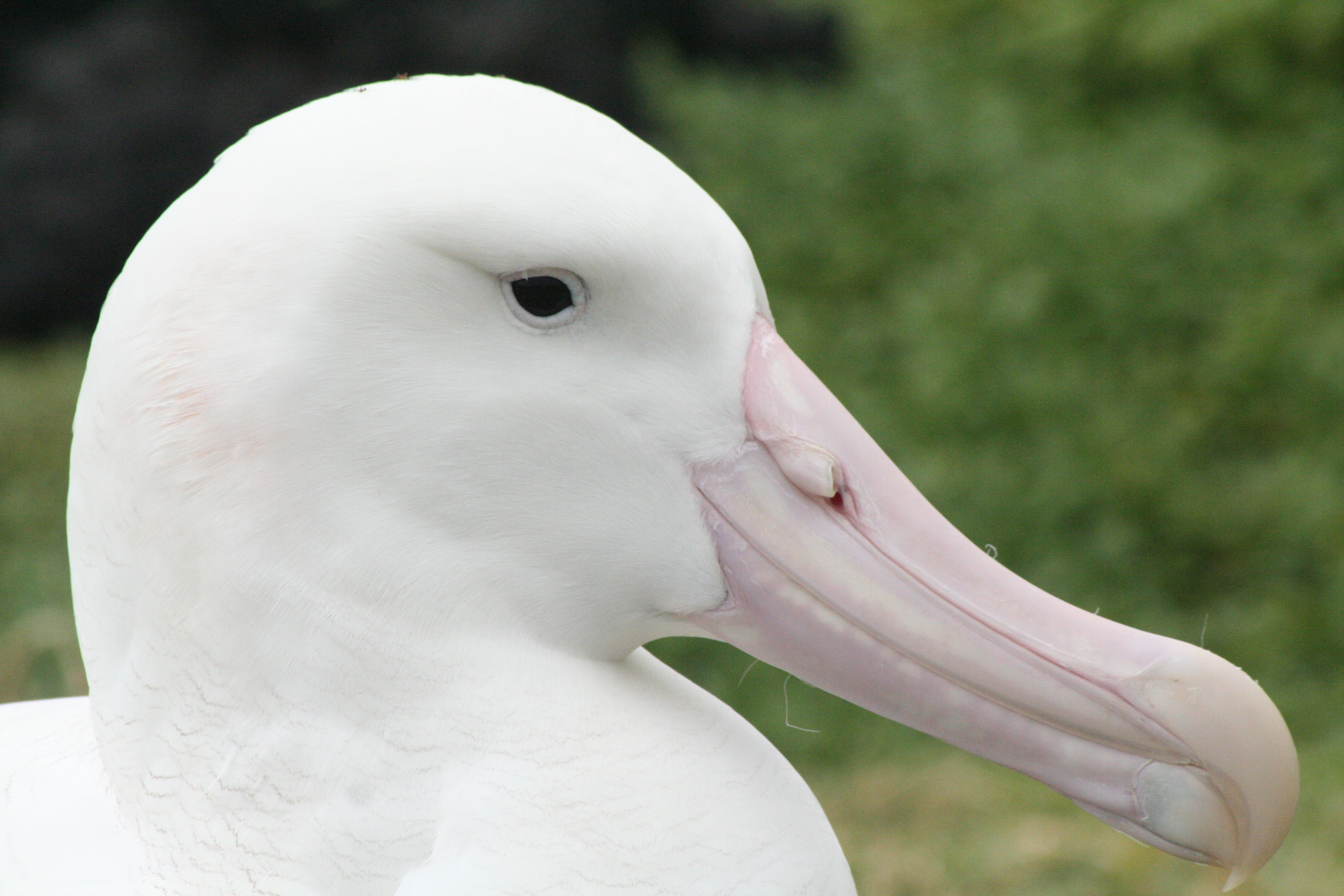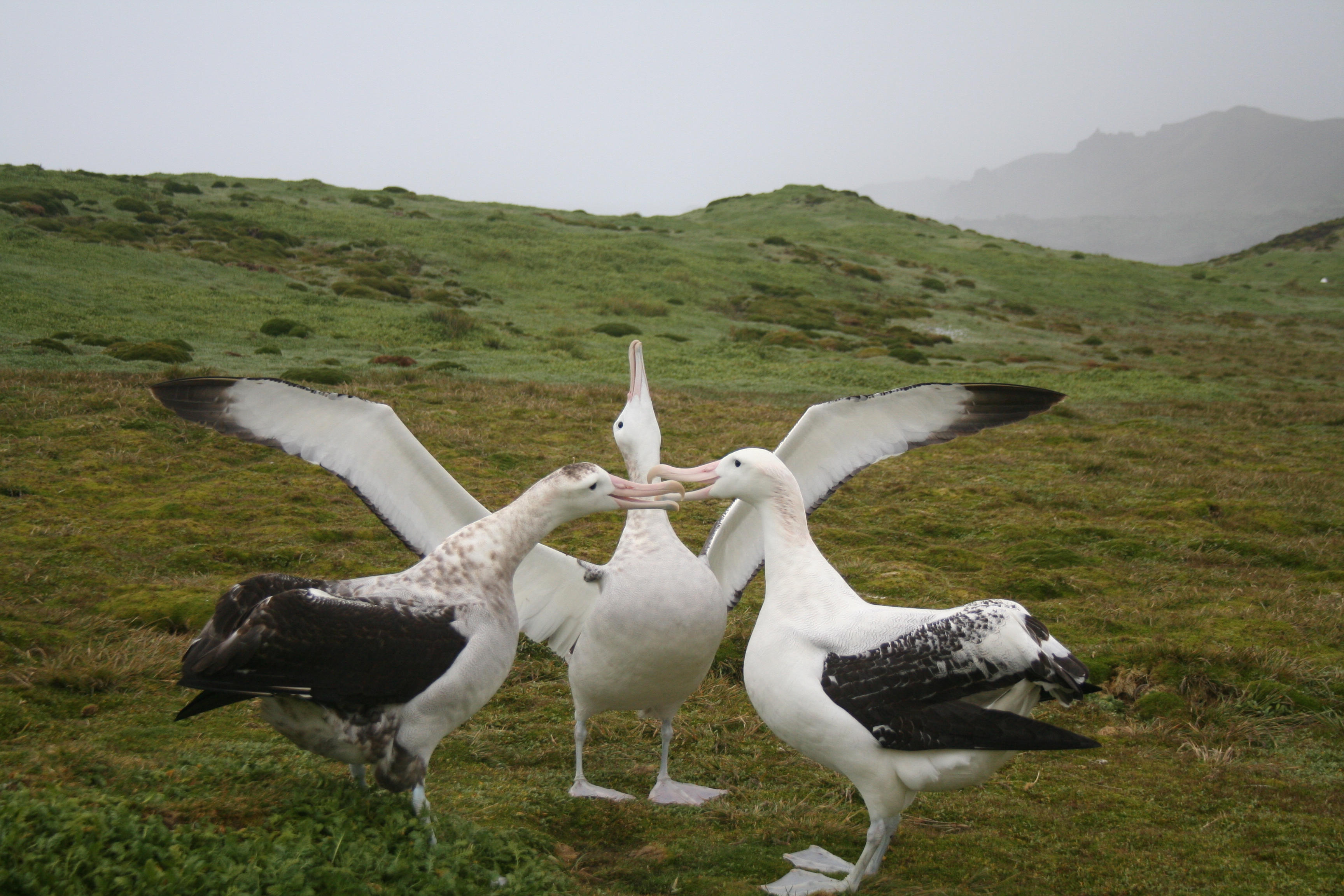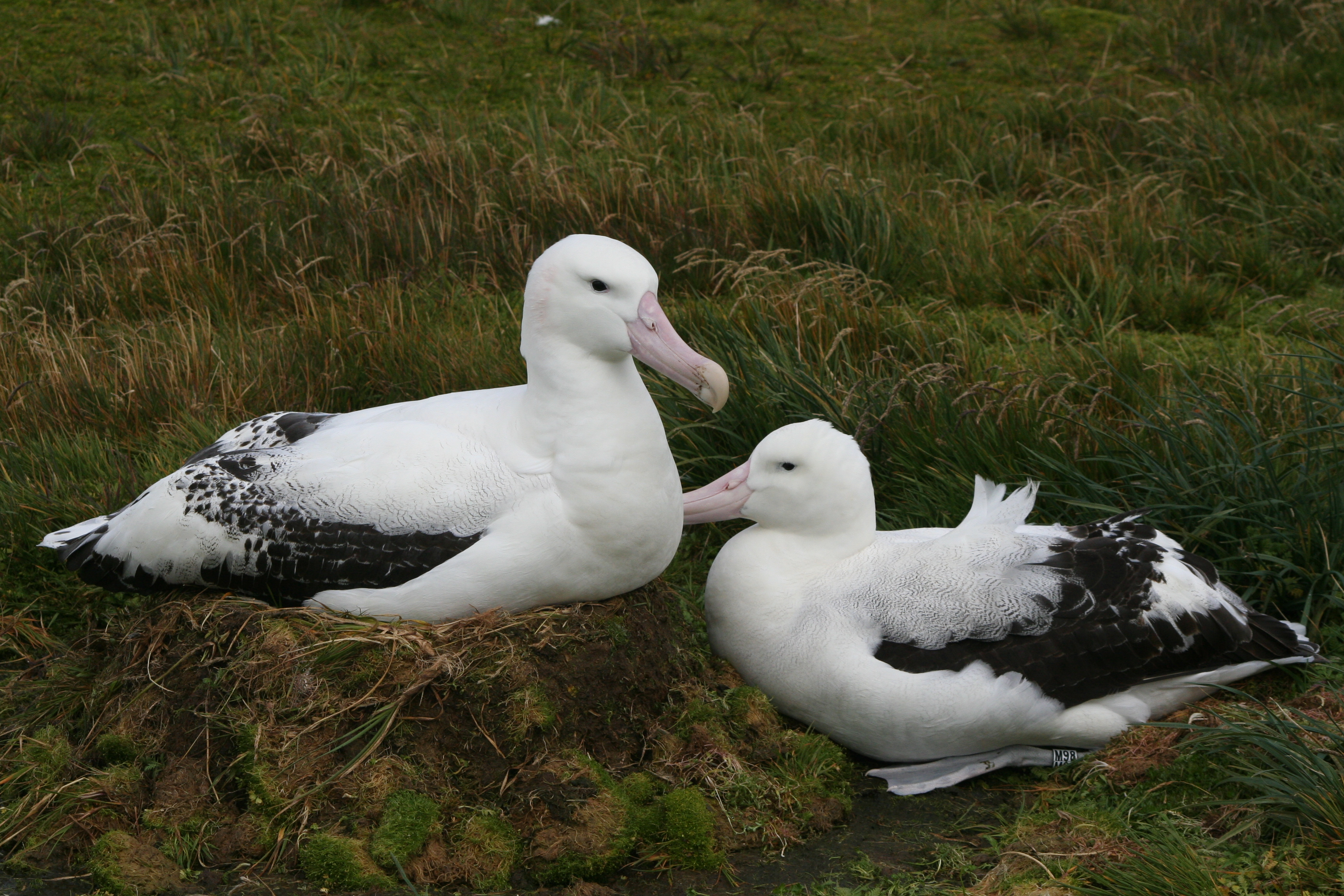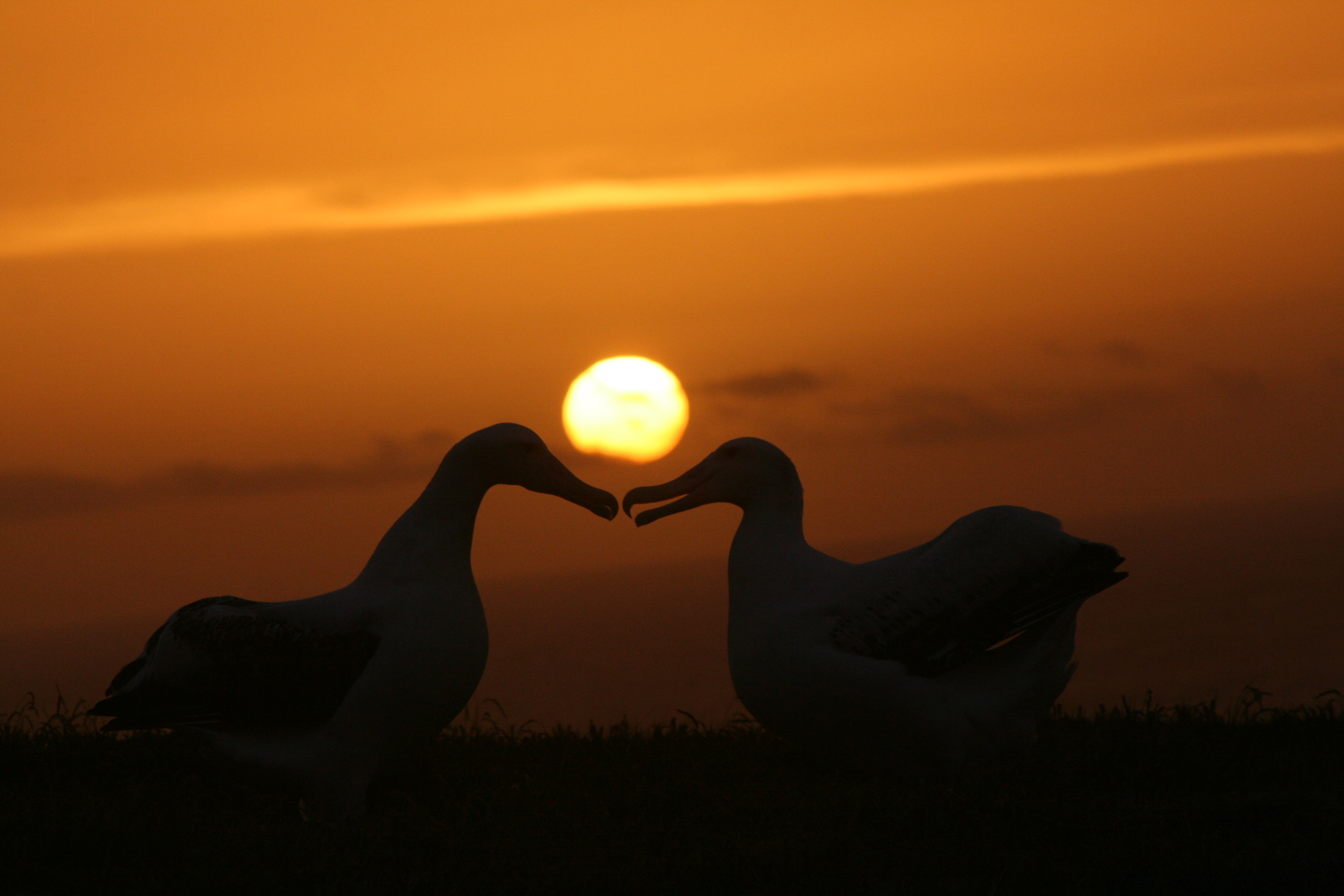
NOTE: This is the sixth in an occasional series that aims to feature photographs of the 31 ACAP-listed species, along with information from and about their photographers. Here, Alexis Osborne writes about his sojourns on two sub-Antarctic islands which included studying moult in the globally Vulnerable Wandering Albatross Diomedea exulans towards his M.Sc. degree.
Alexis Osborne approaches a non-breeding Wandering Albatross under research permit as part of his M.Sc. study on moult
Photographing wing moult in a Wandering Albatross on Marion Island, photograph by Kim Stevens
I started my journey to my first sub-Antarctic island in 2014, not knowing that this was going to be the start of big things. As a young boy growing up in the arid Northern Cape of South Africa, I never dreamt of travelling at sea for days on end, let alone living on islands for major parts of my life. My first voyage was to Marion Island where I spend a year and where I also fell in love with seabirds. On Marion I was largely responsible for setting up a project examining moult patterns in Northern Giant Petrels Macronectes halli and Wandering Albatrosses. Upon my return to South Africa I obtained a B.Sc. Honours in Biological Sciences at the University of Cape Town and followed this with a M.Sc. through the university’s FitzPatrick Institute of African Ornithology that was based on the moult study I had worked on at Marion Island previously . During 2017 I had the opportunity to travel back to Marion for a month to collect more data for my Master’s project and later in the year to Gough Island on the annual takeover. I also spent the 2017/18 summer in Antarctica assisting the Department of Forestry, Fisheries and the Environment (DFFE) to collect data on seabirds.

Young Wandering Albatrosses display in a group, known as a ‘gam’
During my visit to Gough Island I knew immediately I wanted to stay for longer and when the opportunity presented itself in 2018 to return to Gough Island for a year, I grabbed it with both hands. I was employed by the Royal Society for the Protection of Birds (UK’s BirdLife partner) as a seabird biologist monitoring the island’s threatened birds. I enjoyed my time on the island so much that I decided to extend my stay for another year. In 2020 I was awarded my Master’s degree, publishing my first paper from the thesis this year
A breeding pair; the larger and whiter male (left) incubates the single egg
In 2020 I returned to South Africa for a few months before I headed back to Gough Island to be part of the Gough Island Restoration Programme (GIRP), which entails an international team of experts working to eradicate invasive House Mice Mus musculus from the island. I have recently returned from Gough Island once more. Being part of the mouse eradication team has been such an amazing experience, just to be able to see no mice in sight has been the best feeling and I can’t wait for the rest of the wildlife to experience this and - if the eradication effort is proven successful in two years’ time - to see the island being restored to what it was before the mice arrived.
The sun sets on a pair of Wandering Albatrosses on Marion Island
Photographs by Alexis Osborne
Next, we will be focusing our attention via the Mouse-Free Marion Project back to Marion Island where we hope that species such as the Wandering Albatross that I studied will also be able to experience a mouse-free environment.
References:
Dilley, B.J., Hedding, D.W., Henry, D.A.W., Rexer-Huber, K., Parker, G.C., Schoombie, S., Osborne, A. & Ryan, P.G. 2019. Clustered or dispersed: testing the effect of sampling strategy to census burrow-nesting petrels with varied distributions at sub-Antarctic Marion Island. Antarctic Science 31: 231-242. [click here]
Dilley, B.J., Schoombie, S., Stevens, K., Davies, D., Perold, V., Osborne, A., Schoombie, J., Brink, C.W., Carpenter-Kling, T. & Ryan, P.G. 2018. Mouse predation affects breeding success of burrow-nesting petrels at sub-Antarctic Marion Island. Antarctic Science 30: 93-104. [click here]
Osborne, A. 2020. Understanding Moult Patterns in Albatrosses and Petrels breeding on Marion and Gough Islands. MSc thesis. Department of Biological Sciences, University of Cape Town. 82 pp. [click here]
Osborne, A. & Ryan, P.G. 2021. Using digital photography to study moult extent in breeding seabirds. Ostrich doi10.2989/00306525.2021.1897699 plus two photographs in supplementary information. [click here]
Ryan, P.G., Ferreira, C., Perold, V., Osborne, A. & Jones, C.W. 2015. Failure to launch: evidence of protracted parental care in albatrosses. Seabird 28: 48-51. [click here]
Alexis Osborne, 10 September 2021

 English
English  Français
Français  Español
Español 


